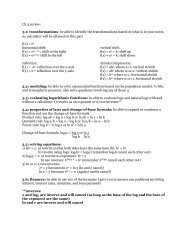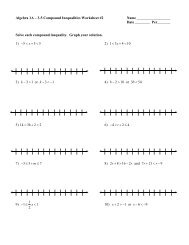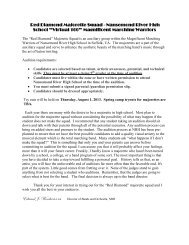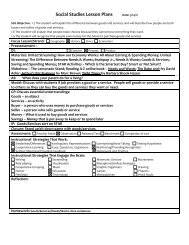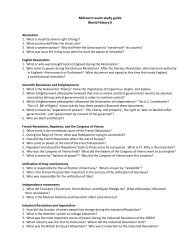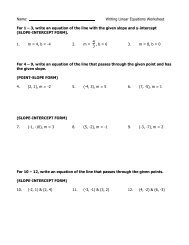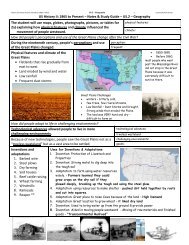Recognizing future tense forms It will not always be as VERB
Recognizing future tense forms It will not always be as VERB
Recognizing future tense forms It will not always be as VERB
- No tags were found...
You also want an ePaper? Increase the reach of your titles
YUMPU automatically turns print PDFs into web optimized ePapers that Google loves.
NameDateNote also the resemblance <strong>be</strong>tween present<strong>future</strong> <strong>tense</strong> <strong>forms</strong> of the third coniugationEnglish.7.Val6s et regds.<strong>tense</strong> <strong>forms</strong> of the second conjugation and thein the following sentence. Then translate it into-r,; i, '&,* <strong>Recognizing</strong> <strong>future</strong> <strong>tense</strong> <strong>forms</strong> <strong>It</strong> <strong>will</strong> <strong>not</strong> <strong>always</strong> <strong>be</strong> <strong>as</strong><strong>tense</strong> <strong>as</strong> it w<strong>as</strong> in the previous examples. More often, youof stems and/or <strong>tense</strong> signs, <strong>as</strong> in the following examples.tion of each verb form and then translate.hard to distinguish Latin verbs by<strong>will</strong> recognrze the distinctive <strong>forms</strong>Determine the <strong>tense</strong> and conjuga-<strong>VERB</strong> TENSE CONJUGATION TRANSLATION1. dobobis2. excOditis3.4.migrabimusregam5.6.7.8.9.10.maneoducitdofenduntexspectabuntmatDramusmittoThe following verbs all have an -e <strong>be</strong>fore the personal ending, but differ in <strong>tense</strong> <strong>be</strong>causethey <strong>be</strong>long to different conjugations. Determine the <strong>tense</strong> and conjugation of each verb.To find whether the -e signals <strong>future</strong> or present <strong>tense</strong>, <strong>as</strong>k yourself: does thefirst principal part of the verb end in -eo? If it does, the e signals present<strong>tense</strong> <strong>be</strong>cause the verb is second conjugation. (e.9., vales
NameDate<strong>VERB</strong>CONJUGATIONTRANSLATION17.18.t9.20.tenetisdlcetrsmittentterrent.,J.; IL-tPractice On pages 16l-162 in your textbook, you read about the god of the Underworld,Pluto. The following p<strong>as</strong>sage supplies additional facts about Pluto, or Dis, <strong>as</strong> he w<strong>as</strong> sometimescalled by the Romans. Read the selection and then translate it.Note the following <strong>as</strong> you translate. Three regions of the Underworld arenamed Erebus (the location of Pluto's palace), Tartarus, and Elysium. Theword canis (dog) in the third sentence is a third declension noun in appositionto Cer<strong>be</strong>rus, the watchdog's name. Do you know what w<strong>as</strong> unusualabout Cer<strong>be</strong>rus?Pluto dicit:Dominus populi magni sum. In ErebO habito et inferdsrego. Clarus canis Cer<strong>be</strong>rus terminos terrae meaedefendit. In agris Tartari vir6s mal6s pdnd et in silv<strong>as</strong>Elysi virds bonds mitto. Poen<strong>as</strong> nuntid et praemia dono.Ad Siciliam, ubi pulchra PrOserpina habitat, equ6s me6sagam. In carr6 meO filiam deae pdnam et tum excOdOmus.Num* probatis? Causam meam agam. Pr6serpina am6. InErebo rOgina erit. Magnus deus sum. N6nne grata essedO<strong>be</strong>t?*Num introduces a question expecting No <strong>as</strong> an answer; You don't... do you?WORKBOOKCopyright @ by The McCraw-Hill Companies, lnc.I-ATIN FOR AMERICANS, LEVEL 1UNITV IEssON XXII 79





